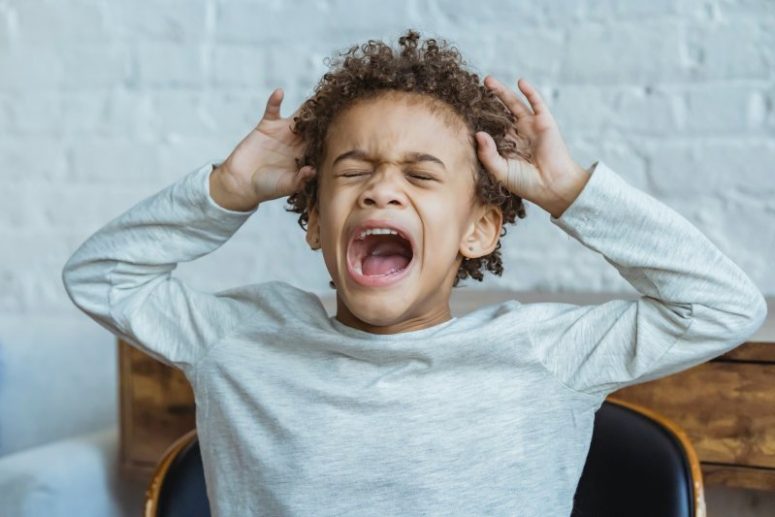Childhood anxiety disorders are common and are experienced between 5 – 10 % of children (Thirwall, 2013). Anxiety disrupts many aspects of children’s development, the social aspect, the emotional side and the academic development. It also presents later life risks for pathological disturbance in adulthood, such as mood disorders or substance misuse. The DSM-5 categorizes anxiety disorders into two common diagnoses: separation anxiety disorder and panic disorder (Goldstein & DeVries, 2017).
Let’s explore what General Anxiety Disorder is before going into these two categories:
- An excessive worry that is not focused on one single trigger or specific situation.
- Restlessness and feeling on edge.
- Difficulty concentrating or the mind going blank.
- Feeling irritable, crying easily and experiencing muscle tension.
- Sleep disturbance with a difficulty to fall asleep or to stay asleep, which means that sleep is restless and unsatisfying.
- Changing in eating patterns or lack of appetite.
- Bed wetting.
- Finally, as with many aspects, a child’s psychological state is expressed through physical symptoms such as aches and pains, nausea and vomiting, etc.…
Separation Anxiety Disorder is manifested at a stage of development where it is no longer appropriate and focuses on the fear of being separated from an attachment figure. The child worries during or before it happens that he / she needs to leave this person, or else the child worries about losing a loved one even through a tragedy. All of this may manifest as a difficulty for the child to leave the home, to go to school, to sleep alone and even social withdrawal.
Panic Disorder is manifested as recurring panic attacks that are brought about abruptly and are present together with other symptoms, these may be changes in the heart rate, sweating, trembling, shortness of breath, chest pain, choking, etc.…
How does anxiety develop in children?
One needs to investigate both intrinsic and extrinsic factors. This means that it depends on the child’s temperament and even genetic aspects and intergenerational patterns of having parents with anxiety disorders. The extrinsic factors would consider the environmental factors such as parental anxiety and parenting style and negative life events. Both aspects would then interplay and affect the child. An example of this would be when a child is anxious and starts to withdraw from social interactions (intrinsic) which worries an already anxious parent (extrinsic), who then in turn becomes even more protective of the child (interplay of both).
The parental interaction or the family dynamic is not the only dimension of the child. One needs to take into consideration the social / cultural context and the school / extra-curricular context which are also impacting on the child and the child’s experience of anxiety.
How may parental anxiety lead to anxiety in children?
Through a child’s interactions with their parents, many messages are passed on and direct or indirect learning occurs. The child learns from their parent’s behaviors, reasoning, learning experiences and how much control or overprotection the parent is exhibiting on the child. All of these give information on how the parent is processing life events and implying to the child how unsafe the world can be.
Which life events may lead a child to develop anxiety?
Negative life events, such as a loss, bullying, parental discord, abuse, illness, or too many changes at the same time. All of these play a part by impacting the child’s feeling of safety and self-competence, contributing perceptions that the world is unpredictable and threatening, and causing the child to feel a lack of control and the need to have increased vigilance.
How can anxiety in children be treated?
CBT is usually the first line of treatment and there are several factors which impact treatment. Research shows that 56% of children following a parent implemented CBT program are successful in tackling the primary diagnosis. Limitations to this treatment would include Parental commitment, disturbances to child’s routine, any financial commitments, lack of support from other domains.
If you think that you can benefit from professional support on this issue you can reach out here.
Abigail Church is a Humanistic Integrative Counsellor who works with adults and children through counselling with Willingness. She can be contacted on abigail@willingness.com.mt or call us on 79291817.
References:
Thirlwal, K., Cooper, P. J., Jessica, K., Merryn, V., Lucy, W., & Creswell, C. (2013). Treatment of child anxiety disorders via guided parent-delivered cognitive–behavioural therapy: Randomised controlled trial. The British Journal of Psychiatry, 203(6), 436-444.
Goldstein, DeVries, Goldstein, Sam, and DeVries, Melissa. Handbook of DSM-5 Disorders in Children and Adolescents. 1st Ed. 2017. ed. 2017. Web.

